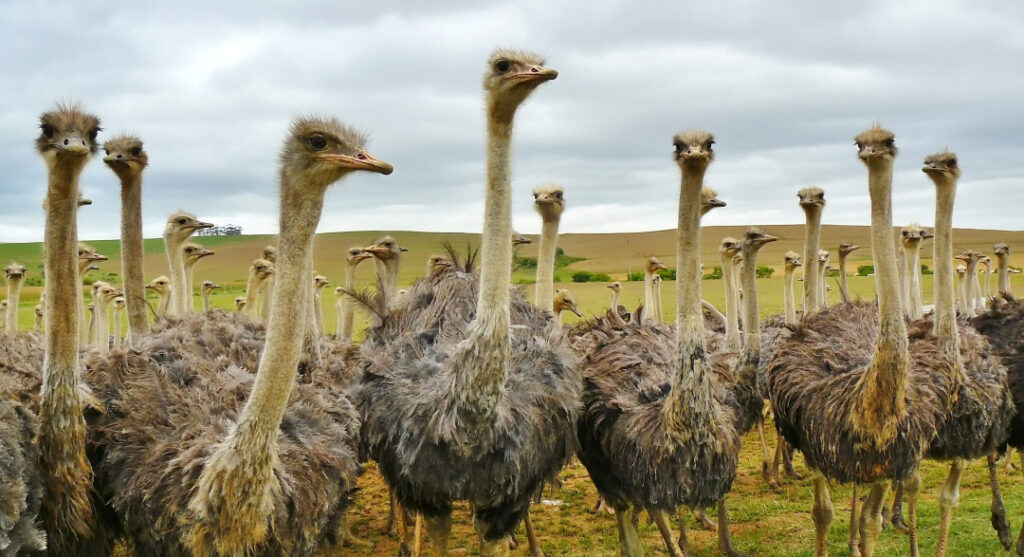
Flight is a remarkable ability that many bird species possess, allowing them to soar through the skies and travel great distances. However, not all birds have the gift of flight. Several species of flightless birds have evolved to thrive in environments where flying is unnecessary. Though lacking the ability to fly, these birds have adapted in other ways to ensure their survival.
In this article, we will explore the various types of flightless birds, the reasons behind their inability to fly, and the intriguing evolutionary features that have allowed them to survive and thrive in their respective ecosystems. Whether you are a bird enthusiast or simply curious about the wonders of nature, this article will provide you with fascinating insights about flightless birds.
Understanding Flightless Birds
Flightless birds, also known as ratites, belong to a distinct group of bird species that have lost the ability to fly. Among the renowned examples are the ostrich, kiwi, penguin, emu, and cassowary. While these birds lack flight muscles and bones and reduced wing size, they exhibit unique characteristics and adaptations, allowing them to survive in their respective environments.
For instance, ostriches, the largest living flightless birds, have adapted long and powerful legs for running, while flightless penguins have adapted to aquatic habitats and have evolved webbed feet and streamlined bodies for swimming. Although some flightless birds have become extinct over time, several living species still amaze us with their resilience and beauty.
Why Some Birds Don’t Fly: The Evolutionary Origins of Flightlessness
Flightlessness in birds has evolved as a result of various factors. Some flightless birds, such as penguins, ostriches, and emus, live in environments where flight is unnecessary for survival. One of the key features is the absence of a keel, a prominent bone structure found in flying birds that supports flight muscles. Some flightless birds that lack keel include kiwi and ostrich, allowing them to save energy and allocate resources toward other survival strategies. These birds have also adapted to their habitats by evolving other means of locomotion, such as swimming or running.
Additionally, flight requires high energy expenditure and specialized adaptations such as lightweight bones and large pectoral muscles, making it energetically demanding. Thus, in environments where flight is not a significant advantage, birds might evolve to become flightless to specialize in different ecological niches, such as foraging, mating and incubating the eggs, and raising the chicks.
Lastly, another theory suggests that flightlessness is a natural response to ecological competition. This can be particularly advantageous in environments devoid of land predators and characterized by plentiful resources, like remote islands. Furthermore, flightlessness has also emerged due to human-driven alterations to a bird’s habitat, such as deforestation and the introduction of mammalian predators.
15+ Birds That Can’t Fly
1. Ostrich (Struthio camelus)

The common ostrich is considered the most well-known, largest living flightless bird on the planet. Native to Africa, the ostrich possesses unique features that set it apart from other birds. Its size is impressive, standing at an average height of 6 to 9 feet tall and weighing between 220 to 350 pounds. Also, ostriches have powerful legs strong enough to deliver fatal kicks. According to Britannica, the ostrich can run across the open lands of Africa up to 45 miles per hour (72.5 km), making it a formidable creature that symbolizes strength and endurance.
2. Kiwi (Genus Apteryx)

The kiwi is a flightless bird native to New Zealand. Although small, it plays a significant role in the country’s cultural heritage. This peculiar bird has a small wingspan and lacks the keel, a structure needed for wing attachment, that flying birds possess. Kiwi’s adaptation to a terrestrial lifestyle has led to the loss of flight. Its plumage is also unique, making it a visually interesting bird. Despite being flightless, the kiwi is an integral part of New Zealand’s ecosystem and is considered a national symbol.
3. Penguin (Family Spheniscidae)

Penguins are commonly associated with the frigid Antarctic regions, although some species can also be found in temperate climates. Penguins possess flipper-like wings that are efficient underwater flippers, allowing them to navigate the ocean with utmost precision. While flightless in the air, penguins are remarkable divers and swimmers. Their streamlined bodies and webbed feet make them highly adapted for underwater exploration. Penguins are highly social birds, often found in large colonies, and are known for their monogamous relationships.
4. Emu (Dromaius novaehollandiae)

Native to Australia, the emu is the largest bird on the continent and the second-largest flightless bird in the world. It belongs to the ratite group and shares common characteristics with other flightless birds, such as a lack of a keel and reduced wing size. The emu’s long legs enable it to run at high speeds, reaching up to 30 miles per hour. They predominantly inhabit grasslands, savannas, and forests, and their diet mainly consists of plants, fruits, and seeds. Despite their inability to fly, emus are agile runners with remarkable survival skills.
5. Cassowary (Genus Casuarius)

The cassowary is a flightless bird found in the tropical rainforests of Australia and New Guinea. It is one of the largest flightless birds, standing up to 5 feet tall. Cassowaries are known for their vibrant and colorful appearance, with bright plumage that makes them visually striking. Additionally, they possess powerful legs with sharp claws for self-defense. Notably, cassowaries are considered one of the most dangerous bird species, so caution should be exercised when visiting them in their natural habitat.
6. Kākāpō (Strigops habroptilus)

The Kākāpō, also known as the night parrot, is a unique and critically endangered flightless parrot native to New Zealand. Renowned for its endearing appearance and nocturnal habits, the Kākāpō is one of the heaviest parrot species globally, with males often weighing up to 4 kilograms.
Their name, “Kākāpō” means “night parrot” in Māori, reflecting their preference for nighttime activity. Unfortunately, due to habitat destruction, introduced predators, and low reproductive rates, the Kākāpō population dwindled to critically low levels, leading to intensive conservation efforts to save this extraordinary and beloved parrot from extinction.
7. Takahe (Porphyrio hochstetteri)

The Takahe is a large, flightless bird endemic to New Zealand, known for its striking blue and green plumage and distinctive red beak. Once considered extinct, it was rediscovered in the remote Fiordland region in the mid-20th century. With only a few individuals left in the wild, extensive conservation efforts have been undertaken to protect and breed the Takahe. Its survival story stands as a testament to the dedication of conservationists to preserving New Zealand’s unique avian biodiversity.
8. Weka (Gallirallus australis)

The Weka, a native flightless rail species of New Zealand, is known for its inquisitive and fearless nature. These robust birds have adapted well to a terrestrial lifestyle and are often found foraging insects, fruits, and even human scraps. Wekas come in various subspecies, each inhabiting different regions of New Zealand, and they have become a symbol of the country’s wildlife. Their resilience in the face of habitat changes and predation by introduced species makes them a fascinating example of adaptability.
9. Rheas (Rhea Americana)

The rhea is a remarkable flightless bird that belongs to the family Rheidae, native to South America. It is one of the largest bird species in the world, standing up to five feet tall and weighing as much as 88 pounds. Rheas are characterized by their long necks, powerful legs, and distinctive ostrich-like appearance. These birds are well adapted to terrestrial life, relying on their strong legs for mobility and defense.
Rheas exhibit sexual dimorphism, with males typically being larger and more colorful than females. During breeding, males build nests and incubate the eggs, demonstrating an intriguing role reversal in parental care. Unfortunately, like many other flightless birds, rheas have faced habitat loss and hunting pressures due to human activities.
10. Inaccessible Island Rail (Atlantisia rogersi)

As its name suggests, the Inaccessible Island Rail is native to Inaccessible Island, a remote and uninhabited island in the South Atlantic Ocean. This small, flightless bird is considered one of the world’s least-known bird species, as it was only discovered in the 1920s. The evolutionary isolation of Inaccessible Island Rail on Inaccessible Island has led to unique adaptations, such as its inability to fly. However, due to the bird’s limited range and the remote nature of its habitat, little is known about its behavior and ecology, making it a subject of scientific intrigue.
Other List of Flightless Birds That Are Considered Extinct Species
Several flightless bird species have sadly gone extinct due to human activities, habitat changes, and the introduction of invasive species. Some of them are as follows:
11. Dodo (Raphus cucullatus)

The dodo, a flightless bird native to the island of Mauritius in the Indian Ocean, is one of the most iconic examples of an extinct flightless bird. Tragically, it vanished from the Earth in the late 17th century. The primary causes of the dodo’s extinction were habitat destruction and the introduction of invasive species by human settlers. These factors, combined with the bird’s lack of natural predators, led to its rapid decline and eventual disappearance. Today, the dodo serves as a poignant symbol of the consequences of human activities on fragile island ecosystems.
12. Moa (Dinornithiformes)

New Zealand was once home to the remarkable moas, a group of flightless birds that ranged in size from small to colossal. These avian giants went extinct around the 15th century, largely due to overhunting by Maori settlers and changes in their habitat. Moa had no natural predators, making them especially vulnerable to human exploitation. The loss of these unique birds represents a significant ecological and cultural loss for New Zealand, and their fossils continue to captivate scientists and enthusiasts alike.
13. Great Auk (Pinguinus impennis)

The great auk, a flightless bird that inhabited the North Atlantic, met a tragic end in the mid-19th century. These charismatic birds were relentlessly hunted for their feathers, eggs, and meat, which led to their rapid decline. In addition to human exploitation, habitat destruction played a role in their extinction. The last known great auks were seen on remote islands off the coasts of Europe, Canada, and the United States. Their disappearance is a poignant reminder of the devastating impact of overharvesting and habitat alteration on vulnerable species.
14. Labrador Duck (Camptorhynchus labradorius)

The Labrador duck, a flightless diving duck native to eastern North America, is another tragic example of an extinct flightless bird. It disappeared in the late 19th century under circumstances still debated by scientists. While habitat loss and hunting likely contributed to its decline, the exact cause of its extinction remains uncertain. Despite being poorly understood, the Labrador duck’s story underscores the fragility of certain species in the face of environmental changes and human pressures.
15. Réunion Ibis (Threskiornis solitarius)

The Réunion ibis, a flightless bird native to the island of Réunion in the Indian Ocean, went extinct in the 18th century. Its demise was primarily attributed to habitat destruction and hunting by human settlers. As a flightless bird, it was particularly susceptible to the threats posed by introduced species and the alteration of its island environment. The loss of the Réunion ibis is a poignant reminder of the irreplaceable biodiversity that has been lost due to human activities.
16. Stephen Island Wren (Traversia lyalli)

The Stephen Island wren, a small flightless bird native to New Zealand, met its unfortunate end in the late 19th century. Introducing invasive species, particularly rats, significantly affected its extinction. These predators and habitat alterations made the wren’s survival increasingly difficult. The extinction of the Stephen Island wren is a stark illustration of the devastating impact that invasive species can have on vulnerable island ecosystems and their unique inhabitants.
17. Elephant Bird (Aepyornithidae)

The Elephant Bird was a massive, flightless bird native to Madagascar. These birds were among the largest ever to exist, with some species standing over 10 feet tall. Despite their impressive size, they went extinct several centuries ago, likely due to habitat loss and hunting by early human settlers.
The Elephant Bird’s enormous eggs, among the largest known, have also left a lasting impression and are valuable in understanding the bird’s biology and history. Their extinction highlights the fragile nature of island ecosystems and the consequences of human interactions with unique and vulnerable wildlife.
Preserving Flightless Birds for the Future
Preserving flightless birds for the future is a critical conservation effort, as many of these unique species face various threats to survival. Several key strategies can be implemented to ensure the long-term survival of flightless birds.
Firstly, it is crucial to protect and restore their natural habitats. Flightless birds often inhabit specific ecosystems, such as grasslands, forests, or islands. Habitat destruction, fragmentation, and degradation are major threats to these birds. Conservation organizations and governments should work together to establish and enforce protected areas, promote sustainable land use practices, and restore degraded habitats.
Secondly, controlling invasive species is essential. Flightless birds are particularly vulnerable to introduced predators, such as rats, cats, and stoats. Eradicating or managing these invasive species in their habitats is crucial to safeguarding flightless bird populations. This may involve using traps, poison bait, or even introducing species-specific diseases to control invasive predators.
Thirdly, breeding and reintroduction programs can be vital in preserving flightless birds. Captive breeding programs can help maintain genetic diversity and provide a safety net if wild populations decline further. Once populations are stable, individuals can be reintroduced into their natural habitats.
Fourthly, public awareness and education are essential for conservation efforts. People need to understand the importance of flightless birds in their ecosystems and the threats they face. Engaging local communities and raising awareness can lead to more support for conservation initiatives and responsible tourism practices.
Lastly, research is critical for better understanding flightless bird species and their needs. Studying their behavior, ecology, and genetics can help inform conservation strategies and improve our ability to protect them effectively.
Frequently Asked Questions
Q. What does it mean for a bird to be “flightless”?
A. Flightless birds are those species that have lost the ability to fly over the course of evolution. They may have wings, but these wings have become adapted for other purposes, such as balance or defense.
Q. Why are some birds flightless?
A. Some birds have become flightless due to evolutionary adaptations driven by ecological factors. These include:
a. Lack of Predators: In environments with no natural land predators, birds may lose their need for flight as a primary means of escape. This is often the case on remote islands with abundant resources and no land-based threats.
b. Abundant Resources: Birds in environments with plentiful food resources and limited competition may not need the energy-intensive ability to fly. Flightless birds can conserve energy by walking or running to obtain food.
c. Specialized Niches: Flightless birds may occupy specialized ecological niches that do not require flight. For example, some flightless birds are adapted to a herbivorous diet and have evolved features like strong legs and beaks for foraging activities.
d. Human Activity: Human-induced changes to a bird’s habitat, such as deforestation or the introduction of invasive mammalian predators, can disrupt the bird’s ability to fly or escape from threats, leading to flightlessness.
Q. Are there any advantages to being flightless?
A. Yes, flightlessness can offer advantages in certain situations. Flightless birds can conserve energy, which is particularly beneficial when food is abundant and predators are scarce. They may also be well-suited to specific ecological niches, such as those involving ground-dwelling or aquatic habits.
Q. What is the smallest flightless bird in the world?
A. The smallest flightless bird is the Inaccessible Island rail, also known as the smallest flightless bird in the world. It is native to Inaccessible Island in the South Atlantic Ocean and has adapted to its isolated environment by losing the ability to fly.
Q. What is the largest living bird in the world?
A. The largest living bird on Earth is the ostrich, a member of the Struthioniformes order. Ostriches are known for their immense size, long legs, and distinctive appearance. They are native to Africa and are renowned for being flightless birds, relying instead on their strong legs for swift running.
Q. How does the sense of smell vary among different bird species, including domestic birds?
A. The sense of smell in birds varies widely. Some birds, like the kiwi of New Zealand, have a highly developed sense of smell, while others, such as domestic birds like chickens, have a less acute sense of smell.
Q. How have human activities like deforestation influenced discrepancies in bird populations?
A. Human-induced changes to bird habitats, such as deforestation and habitat alteration, have often led to discrepancies in bird populations. These changes can disrupt ecosystems and result in declines in bird species that rely on specific habitats for food and shelter.
Q. How do scientists study flightless birds and their adaptations?
A. Scientists study flightless birds through field observations, genetic analyses, and comparative anatomy. By examining their physical features, behaviors, and genetic makeup, researchers gain insights into these species’ evolutionary processes that have led to flightlessness.
Conclusion
In conclusion, flightlessness in birds can be attributed to various reasons. Some birds that inhabit islands may lose the ability to fly due to the lack of predators, while others may become flightless due to evolutionary changes. The list of flightless birds or birds that can’t fly is extensive, including the ostrich, kiwi, penguin, emu, cassowary, and many more. Each species has adapted uniquely to its environment, resulting in fascinating characteristics and behaviors. Recognizing and appreciating these birds is important, as they offer valuable insights into the diversity of life on Earth.
For more compelling articles like this, subscribe to our community at the Family Hint today!




